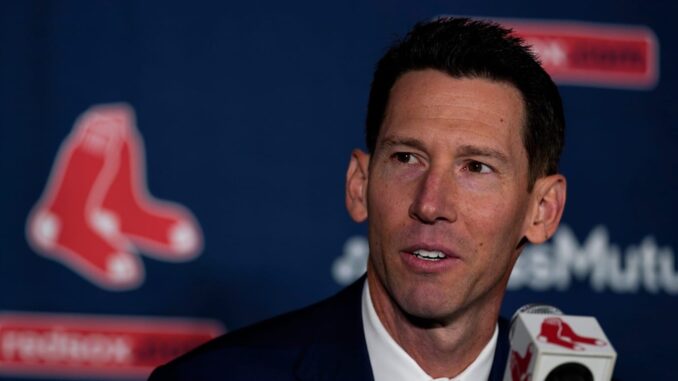
Lingering Doubts: Red Sox’s Offseason Moves Leave Offensive Gaps Unaddressed – A 2025 Outlook….
As the Boston Red Sox prepare for the 2025 season, concerns are mounting over the team’s offensive capabilities. Despite making significant acquisitions to bolster their pitching staff, notably the addition of left-hander Garrett Crochet, the front office has yet to adequately address pressing needs within the lineup. This oversight raises questions about the team’s ability to compete in the formidable American League East.
Offseason Focus: Pitching Enhancements
The Red Sox’s offseason strategy has been heavily skewed toward strengthening their pitching rotation. The acquisition of Garrett Crochet provides the team with a much-needed ace. Additionally, the signing of Walker Buehler further solidifies the starting rotation. While these moves are commendable and address long-standing pitching deficiencies, they do little to enhance an offense that struggled with consistency in the previous season.
Unmet Offensive Needs
A glaring issue that remains unaddressed is the lack of a potent right-handed bat. The current lineup is predominantly left-handed, which poses strategic challenges against left-handed pitching. The departure of key players like Juan Soto and Tyler O’Neill has exacerbated this imbalance, leaving a void in the middle of the batting order. The pursuit of free agent Alex Bregman was a potential solution; however, reports indicate that the Red Sox have strategically decided against competing for his signature, assuming that other teams won’t sign him either.
Prospects and Projections
Looking ahead, the Red Sox are banking on the development of their top prospects to fill offensive gaps. Marcelo Mayer is set for his first big league spring training and has shown promise with a strong on-base percentage and home run capability. Additionally, Kristian Campbell and Roman Anthony project to be significant contributors, with Campbell expected to be one of the most accomplished offensive players to debut in the majors in 2025. However, relying heavily on unproven talent carries inherent risks, and it remains uncertain how seamlessly these prospects will transition to the major league level.
Luxury Tax Considerations
Financial constraints also play a role in the Red Sox’s roster decisions. The team has been strategic in managing its payroll to stay under the luxury tax threshold. For instance, the structuring of Jarren Duran’s contract minimized the 2025 Average Annual Value (AAV) impact, saving about $3 million in AAV space. While fiscal responsibility is prudent, it should not come at the expense of fielding a competitive team, especially when offensive reinforcements are critically needed.
Comparative Analysis: League Movements
The broader league context further underscores the urgency for offensive upgrades. Rivals have been active in enhancing their rosters, with significant deals such as Juan Soto’s 15-year contract with the New York Mets and Max Fried’s long-term deal with the New York Yankees. These moves heighten the competitive landscape, making it imperative for the Red Sox to bolster their lineup to keep pace.
Conclusion
As the 2025 season approaches, the Boston Red Sox find themselves at a crossroads. While the bolstering of the pitching staff addresses a critical need, the lack of attention to offensive deficiencies could undermine the team’s overall competitiveness. The reliance on prospects, though promising, is fraught with uncertainty. To contend in the highly competitive AL East, the Red Sox must take decisive action to balance their roster, ensuring that their offense is capable of supporting their enhanced pitching rotation. Failure to do so may result in a season where, despite strong pitching performances, the team struggles to generate the run support necessary for sustained success.




Be the first to comment